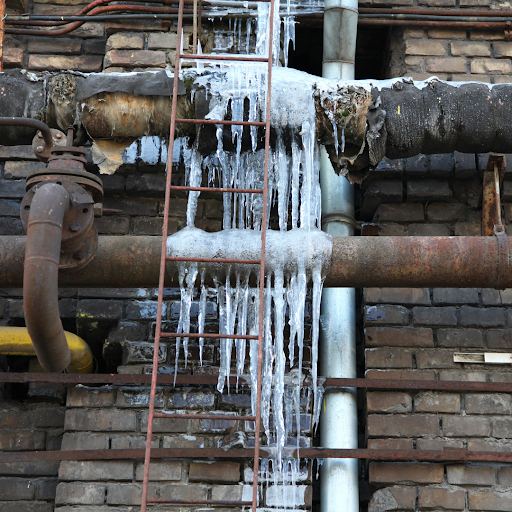We have discovered the article about Prevent Frozen Pipes listed below on the web and figured it made good sense to quickly share it with you on my blog.

Winter can ruin your plumbing, especially by freezing pipelines. Right here's how to stop it from occurring and what to do if it does.
Introduction
As temperatures drop, the threat of icy pipelines increases, possibly bring about costly fixings and water damages. Recognizing just how to avoid icy pipelines is vital for home owners in chilly environments.
Recognizing Frozen Pipelines
What causes pipelines to freeze?
Pipes ice up when subjected to temperature levels below 32 ° F (0 ° C) for expanded durations. As water inside the pipelines ices up, it expands, taxing the pipeline walls and possibly causing them to break.
Threats and problems
Icy pipelines can bring about water disturbances, residential property damages, and costly repair services. Burst pipelines can flood homes and trigger considerable structural damage.
Indicators of Frozen Piping
Identifying icy pipes early can avoid them from rupturing.
Exactly how to recognize frozen pipelines
Seek decreased water circulation from faucets, unusual smells or noises from pipes, and noticeable frost on exposed pipelines.
Prevention Tips
Protecting at risk pipelines
Wrap pipelines in insulation sleeves or use warm tape to secure them from freezing temperatures. Focus on pipelines in unheated or external areas of the home.
Heating strategies
Maintain indoor rooms properly warmed, particularly locations with pipes. Open cupboard doors to enable cozy air to distribute around pipelines under sinks.
Shielding Outside Plumbing
Garden hose pipes and exterior taps
Disconnect and drain yard pipes prior to winter season. Install frost-proof faucets or cover exterior faucets with protected caps.
What to Do If Your Pipes Freeze
Immediate activities to take
If you believe frozen pipes, maintain faucets open up to alleviate pressure as the ice thaws. Make use of a hairdryer or towels soaked in hot water to thaw pipelines gradually.
Long-Term Solutions
Architectural modifications
Take into consideration rerouting pipes far from exterior walls or unheated locations. Add extra insulation to attic rooms, basements, and crawl spaces.
Upgrading insulation
Invest in high-grade insulation for pipelines, attic rooms, and wall surfaces. Proper insulation helps preserve regular temperature levels and decreases the danger of icy pipes.
Conclusion
Stopping icy pipelines requires aggressive steps and quick actions. By recognizing the causes, signs, and safety nets, house owners can protect their pipes during cold weather.
6 Proven Ways to Prevent Frozen Pipes and Protect Your Home
Disconnect and Drain Garden Hoses
Before winter arrives, start by disconnecting your garden hoses and draining any remaining water. Close the shut-off valves that supply outdoor hose bibs and leave the outdoor faucet open to allow any residual water to drain. For extra protection, consider using faucet covers throughout the colder months. It’s also important to drain water from any sprinkler supply lines following the manufacturer’s directions.
Insulate Exposed Pipes
Insulating your pipes is an effective way to prevent freezing. Pipe insulation is readily available at home improvement stores and is relatively inexpensive. Pay close attention to pipes in unheated areas such as the attic, basement, crawl spaces, or garage. Apply foam insulation generously to create a buffer against the cold. You can also wrap your pipes in heat tape or thermostat-controlled heat cables for added warmth.
Seal Air Leaks
Inspect your home for any cracks or openings that could let in cold air. Seal any holes around the piping in interior or exterior walls, as well as the sill plates where your home rests on its foundation. Additionally, make sure to keep your garage door closed unless you’re entering or exiting. Leaving it open creates a significant air leak that can lead to frozen pipes.
Allow Warm Air Circulation
During cold snaps, it’s essential to allow warm air to circulate evenly throughout your home. Leave interior doors ajar to promote better airflow. Open kitchen and bathroom cabinets to help distribute heat consistently around the rooms. If you have small children or pets, be sure to remove any household chemicals or potentially harmful cleaners from open cabinets for safety.
Let Faucets Drip
A small trickle of water can make a big difference in preventing ice formation inside your pipes. When temperatures drop significantly, start a drip of water from all faucets served by exposed pipes. This continuous flow helps prevent the water from freezing. Additionally, running a few faucets slightly can relieve pressure inside the pipes, reducing the chances of a rupture if the water inside does freeze.
https://choateshvac.com/6-proven-ways-to-prevent-frozen-pipes-and-protect-your-home/

We were shown that article on How To Avoid Freezing Pipes through a pal on our other domain. Liked our entry? Please share it. Help someone else locate it. We love your readership.
Services